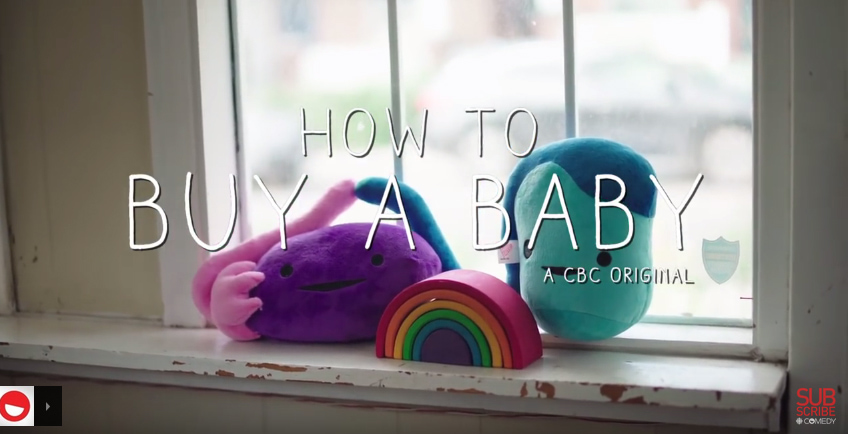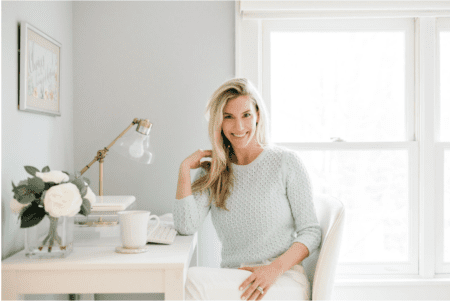
Writer Wendy Litner and producer, Lauren Corber, are ‘recovering lawyers’ who are passionate about storytelling. Litner’s personal experience, undergoing IVF treatments and navigating the stressful (and sometimes darkly funny) experience, inspired her to create ‘How to Buy a Baby.’ The series is a CBC Digital original that has sparked interest outside of their native Canada. Basically, anyone who has gone through fertility treatments or know someone who has will relate!
We spoke with Wendy Litner in Toronto about the evolution of her series, and why she’s passionate about breaking down the many misconceptions about infertility.
What inspired you to create “How to Buy a Baby”?
I wrote “How to Buy a Baby” while my ovaries were deep in infertility treatments. I didn’t know what to do with all my hope and pain and uncertainty and complex feelings about opening myself up (emotionally and physically) to the absurd invasiveness that is assistive reproductive technology. I was really struggling with the process, feeling so alone in my experience. Everyone on Facebook was posting pictures of their adorable baby bumps and their gender reveal parties and their beautiful children (and I was like ‘gender reveal parties!? I just want to be a mom! To any baby! Seriously any baby at all! Please!’).
As a writer, I was really excited to write about a couple struggling through such treatments in a humorous way. We all know that infertility is heartbreaking, but I was energized to find the comedic threads in the situation. My husband and I coped by laughing at our experience and it was our ability to connect through our non-intimate attempt to have a baby (some treatments with another man’s sperm) that made me feel like we succeeded, even though we only ever got BFN’s.
I hoped that this series wouldn’t just tell me and my husband’s story of struggling to conceive, but also tell the story of 1 in 6 Canadian couples and the 1 and 8 American couples who struggle with not being able to make a baby the fun way. I hoped it would make others feel less alone and provide a window for friends and family of those struggling into what we go through to try and have a baby.
How did you come to work together on this series? Did you both have first-hand experience with IVF?
Lauren and I actually met at Osgoode Hall Law School in Toronto. As a law firm summer student I even shared an office with Lauren’s then boyfriend (now husband). I remember meeting Lauren for lunch one day and lamenting about how we wished we could find a way to pursue our love of producing and writing respectively. Here we are now, years since that conversation, both recovering lawyers, working together on “How to Buy a Baby.”
Lauren has a lot of incredible experience producing amazing digital content (My 90 Year Old Roommate) and as I was developing “How to Buy a Baby”, I was so excited when she came on board. It’s incredible to be able to work on your passion and it is even more special to be able to do it with a dear friend.
How has humor helped you navigate infertility? Why do you think it can be helpful?
Humor has always been my coping mechanism and it was the one I brought to infertility treatments. My husband and I spent our entire time at the clinic cracking jokes, trying to make each other laugh. I needed to laugh or I wouldn’t stop crying (of course I did a lot of crying, too). Of course infertility is heartbreaking. Of course it’s painful and raw and depressing. But, I also found it hilarious. I found it to be funny and so very human.
I was incredibly inspired by Tig Notaro’s Live performance. I was crying and laughing at her amazing ability to create a brilliant comedy routine out of her experience with breast cancer and I wanted to try and do the same thing with infertility.
What was the response when you pitched this idea? Did networks/producers see the need for such a series?
As a first step in bringing the series to life, I applied for the Independent Production Fund here in Canada (a fund for digital series). As part of that process, I had to create a proof of concept preview of the series and one of the metrics for judging the project was audience engagement in that preview. I was so excited to be able to show funders how connected the infertility community was to the concept of the project. For so long, those suffering with infertility have been left out of the conversations. We have been drowning in pregnancy announcement and parenting memes and we don’t get to see ourselves or our experience in mainstream media enough. There were certainly questions from funders at the beginning about whether or not people experiencing infertility really, truly, wanted to laugh at the experience. I was certain they did. Infertility sufferers are a resilient bunch and I was certain there were others finding treatments to be surreally absurd and were ready to laugh at it together in a respectful and sensitive way.
All our funders: the Independent Productions Fund (IPF), the Canadian Broadcast Corporation (CBC) and the TELUS Health and Wellness Fund have all been incredibly supportive and committed to promoting the series and to helping fight the stigma of infertility.
Find more by following @howtobuyababy.

Listen to stories, share your own, and get feedback from the community.


















